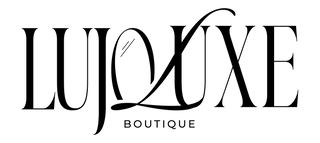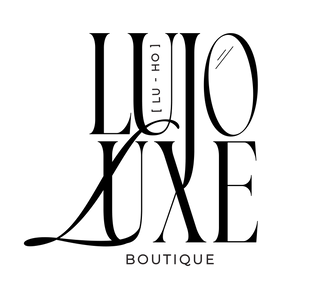Business casual dressing can sometimes feel like a mystery, but it's an important style for many workplaces. This style gives you a polished look while still being comfortable. It's a balance—more formal than your weekend wear but not as strict as traditional business suits. Knowing how to dress business casual can help you feel confident in various settings, whether you're heading to a meeting or balancing work with family time.
For busy Latina professionals and mothers, having a versatile wardrobe is essential. You want outfits that can transition seamlessly from a business meeting to picking up the kids from school. Business casual makes this possible by providing stylish yet practical options. This guide will help you understand the basics of business casual, the types of jobs that typically require it, and offer some useful tips on what to wear and what to avoid.
By mastering the art of business casual dressing, you can simplify your mornings and feel ready for whatever the day brings. You'll find that having a few key pieces in your wardrobe can make dressing for work easier and more enjoyable. Let's dive into the essentials of business casual and how you can make this style work for you.
Understanding Business Casual Dressing
Defining Business Casual
Business casual is a dress code that mixes business wear with casual elements. It's less formal than traditional business attire but still professional. Think about pairing a blazer with nice slacks or a professional blouse with a skirt. The aim is to look put-together without appearing too stiff.
For women, business casual often includes items like blouses, cardigans, knee-length skirts, and dress pants. Avoid overly flashy or casual clothes. Business casual lets you express some personal style while keeping a professional look suitable for the office.
Why Business Casual is Important
Business casual is important because it provides a balance between comfort and professionalism. For many professionals, especially mothers juggling various roles, this dress code simplifies the daily decision of what to wear. You won't need separate wardrobes for work and casual outings because business casual works well for both.
This style also fosters a comfortable yet productive work environment. When employees feel good in what they're wearing, they may be more confident and efficient. Business casual ensures you're dressed appropriately for different activities, from meetings to after-work functions.
Jobs That Embrace Business Casual Style
Common Workplaces With Business Casual Dress Codes
Many workplaces prefer a business casual dress code because it's practical and looks professional without being too strict. Common workplaces that embrace this style include offices with a relaxed setting, educational institutions, and nonprofit organizations. These environments often need employees to look neat and professional while allowing some flexibility in their dress choices.
In these settings, you'll typically see employees wearing well-fitted blouses, dress pants, tailored skirts, and comfortable but stylish footwear. By adopting a business casual dress code, these workplaces create an atmosphere that is both professional and comfortable.
Industries Where Business Casual is the Norm
Several industries have made business casual their standard dress code. These include:
- Tech Companies: Often have a laid-back approach to dressing but require employees to maintain a polished appearance for meetings and presentations.
- Creative Agencies: Advertising, marketing, and design firms appreciate a creative yet professional look. Business casual fits perfectly here, blending style with professionalism.
- Healthcare Administration: While doctors and nurses wear uniforms, administrative staff often follow a business casual dress code.
- Education: Teachers and school administrators frequently dress business casual to look professional while being approachable to students and parents.
Understanding which industries favor business casual can help you dress appropriately for job interviews and day-to-day work. This dress code is all about looking professional without the need for strict formal attire.
What to Wear in a Business Casual Setting
Key Clothing Items
Building a business casual wardrobe can be simple with the right key pieces. Here are some must-have items:
- Blouses and Tops: Choose blouses, button-down shirts, and casual sweaters in neutral or soft colors. Patterns should be subtle, like small stripes or dots.
- Dress Pants and Skirts: Well-fitted dress pants, chinos, or knee-length skirts are essential. Stick to colors like black, navy, gray, and khaki for versatility.
- Blazers and Cardigans: A nice blazer or cardigan can instantly elevate a simple outfit. Opt for classic cuts and colors for easy mixing and matching.
- Dresses: Choose simple, knee-length dresses that don't have flashy designs. They should be comfortable and look professional.
Having these items in your closet can help you create a variety of business casual outfits suitable for any work environment.
Useful Accessories
Accessories can enhance your business casual outfit without overpowering it. Consider these options:
- Belts: A sleek belt can add a polished look to your outfit. Stick to classic colors like black or brown.
- Scarves: Lightweight scarves can add a touch of color and style. Choose simple patterns that don't clash with your clothes.
- Jewelry: Minimalistic jewelry works best. Think studs, small hoops, or a simple bracelet. Avoid oversized or flashy pieces.
- Handbags: A clean, structured handbag in a neutral color can be both practical and stylish for the office.
These accessories can help you express your personal style while keeping your look professional and neat.
Footwear Choices
The right shoes complete your business casual outfit. Consider these footwear options:
- Flats: Comfortable and stylish, perfect for a long day at work.
- Loafers: A classic choice that pairs well with pants or skirts.
- Ankle Boots: Great for fall or winter and versatile enough for various outfits.
- Low Heels: Comfortable and professional, low-heeled pumps can add a touch of elegance to your look.
Avoid overly casual shoes like sneakers or flip-flops. The right footwear will ensure you look polished and feel comfortable throughout the day.
What to Avoid in Business Casual Dressing
Too Casual Pieces to Skip
Certain casual items are best left out of a business casual wardrobe. Here are some to avoid:
- Graphic T-Shirts: They are too casual and often unprofessional.
- Shorts: Not appropriate for most business settings unless specified by your company.
- Ripped Jeans: Even if they are trendy, they appear too casual. Stick to clean, well-fitted jeans if they are allowed.
- Sweatpants and Hoodies: Comfortable at home, but not suitable for the office.
Steer clear of these items to maintain a professional and neat appearance at work.
Overly Formal Items to Avoid
While dressing business casual, avoid pieces that are too formal. These items can make you look overdressed:
- Evening Wear: Cocktail dresses and tuxedos are way too formal for a regular workday.
- High Heels Over 3 Inches: These can appear too dressy and are often uncomfortable for long periods.
- Formal Jewelry: Large, expensive-looking pieces may seem out of place. Opt for minimalistic options instead.
By avoiding overly formal items, you can strike the right balance with your business casual wardrobe.
Avoiding Common Mistakes
When dressing business casual, avoid these common mistakes:
- Clashing Colors: Stick to colors that complement each other to keep your outfit cohesive.
- Over-accessorizing: Too many accessories can make your outfit look cluttered. Less is more.
- Ignoring Fit: Ensure your clothes fit well. Ill-fitting attire can make even the best outfits look sloppy.
Paying attention to these details will help you perfect your business casual look.
Conclusion
Mastering business casual dressing can simplify your life and enhance your professional image. This dress code provides the perfect balance between looking good and feeling comfortable, a necessity for busy Latina professionals and mothers who juggle various roles daily. By focusing on essential clothing items, useful accessories, and appropriate footwear, you can create a versatile wardrobe that suits different activities throughout your day.
Avoiding items that are too casual or overly formal ensures you strike the right balance. This attention to detail can make a huge difference in how you feel and are perceived at work. Business casual dressing is not just about looking good; it's about feeling good, too.
Elevate your business casual wardrobe with stylish pieces from Lujo Luxe Boutique. Browse our collection today to find versatile outfits perfect for any setting!


